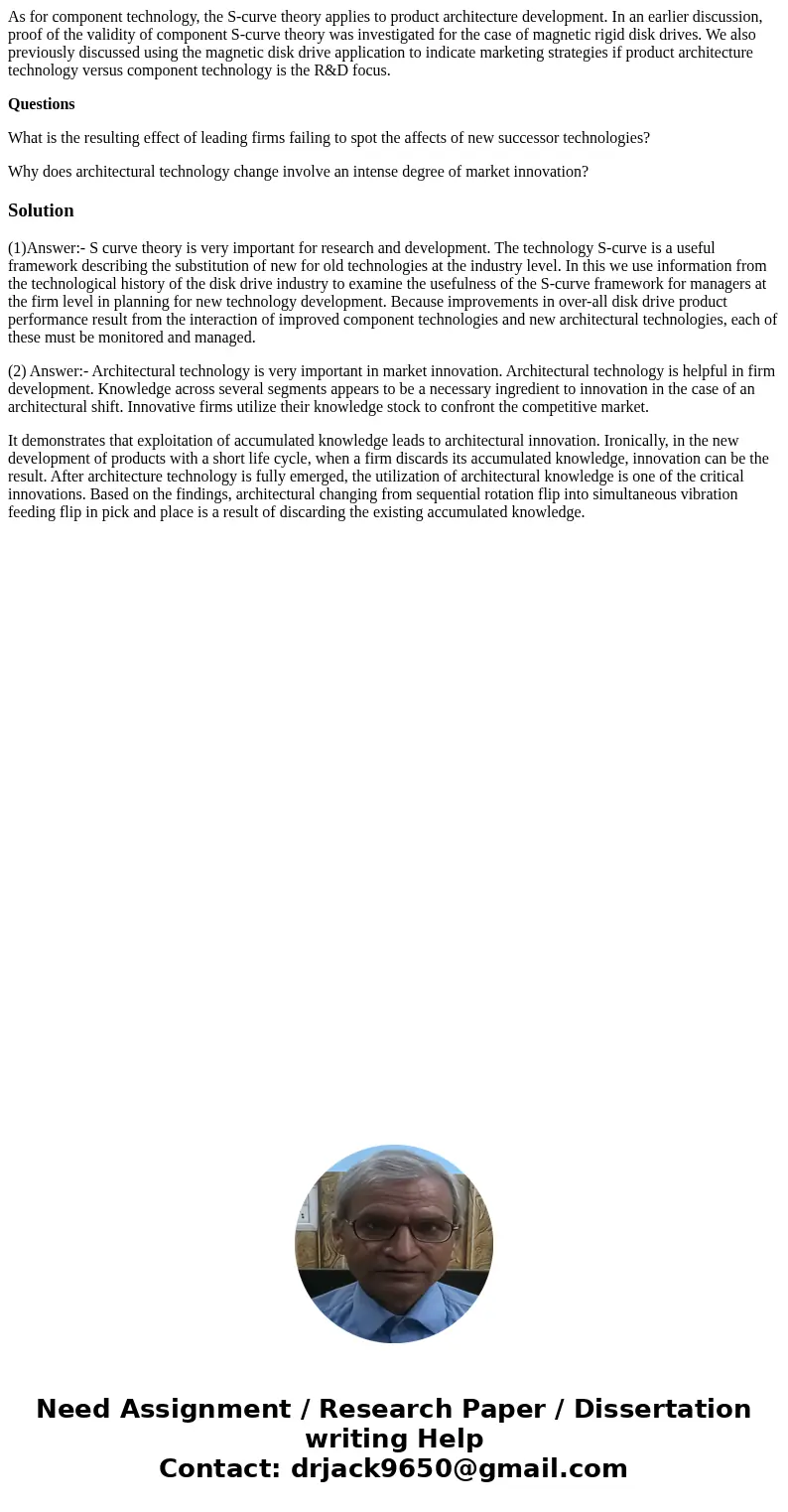As for component technology the Scurve theory applies to pro
As for component technology, the S-curve theory applies to product architecture development. In an earlier discussion, proof of the validity of component S-curve theory was investigated for the case of magnetic rigid disk drives. We also previously discussed using the magnetic disk drive application to indicate marketing strategies if product architecture technology versus component technology is the R&D focus.
Questions
What is the resulting effect of leading firms failing to spot the affects of new successor technologies?
Why does architectural technology change involve an intense degree of market innovation?
Solution
(1)Answer:- S curve theory is very important for research and development. The technology S-curve is a useful framework describing the substitution of new for old technologies at the industry level. In this we use information from the technological history of the disk drive industry to examine the usefulness of the S-curve framework for managers at the firm level in planning for new technology development. Because improvements in over-all disk drive product performance result from the interaction of improved component technologies and new architectural technologies, each of these must be monitored and managed.
(2) Answer:- Architectural technology is very important in market innovation. Architectural technology is helpful in firm development. Knowledge across several segments appears to be a necessary ingredient to innovation in the case of an architectural shift. Innovative firms utilize their knowledge stock to confront the competitive market.
It demonstrates that exploitation of accumulated knowledge leads to architectural innovation. Ironically, in the new development of products with a short life cycle, when a firm discards its accumulated knowledge, innovation can be the result. After architecture technology is fully emerged, the utilization of architectural knowledge is one of the critical innovations. Based on the findings, architectural changing from sequential rotation flip into simultaneous vibration feeding flip in pick and place is a result of discarding the existing accumulated knowledge.

 Homework Sourse
Homework Sourse